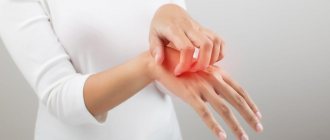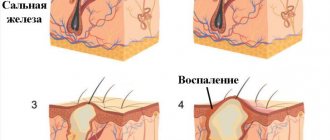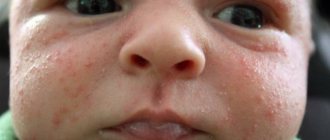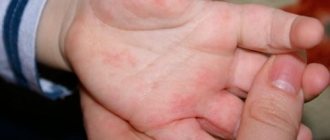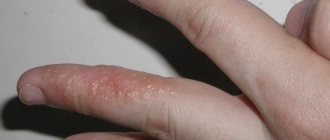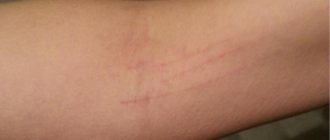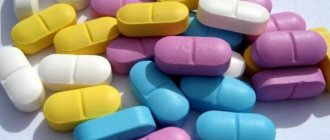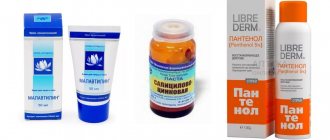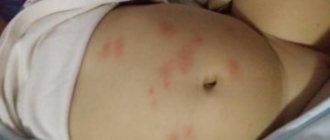Almost all people periodically face the problem of pimples appearing on their face.
For some, the appearance of a red spot on the skin is a rare occurrence, while others have to deal with this trouble much more often. It is especially frustrating when an inflamed area appears on the skin before a date, interview or holiday event.
But before you eliminate a single pimple or begin a serious struggle for clear skin, you must first figure out exactly what problem you are facing and find out the cause of its occurrence.
Pimples on the face can be divided into two types: white and red.
White formations
- Milia are dense yellowish or white nodules that form under the skin. Typically, such pimples have clear boundaries, rise above the surface of the skin and range in size from 0.5 mm to 3 mm.
- Comedones are usually blocked ducts of the sebaceous glands. Often these pimples become inflamed due to bacteria in the ducts.
Red bumps or papules
They are shaped like red nodules, dense and painless to the touch.
The cause of their appearance is often inflammation due to blockage of the ducts of the sebaceous glands in the upper layer of the epidermis.
Based on their condition, such formations on the skin can be divided into:
- Inflamed . They are characterized by their large size and red color. These pimples may or may not be filled with pus. If the size is small, then the inflammation will most likely pass without a trace; if the pimple is large, there is a high probability of a scar forming in its place.
- Uninflamed . These include “blackheads” and whiteheads, which are formed as a result of blockage of the sebaceous ducts. After their removal, no traces remain on the face.
Causes of rash development
Correctly determining why acne occurs on the forehead is not always easy.
- Acne occurs from the secretion of large amounts of sebum by the sebaceous and sweat glands. In this case, the skin simply does not have time to eliminate the excess amount of sebum. It begins to harden, clog the pores, and then forms a plug that clogs the excretory ducts of the glands.
- Dust, dirt and dead parts of the epidermis also clog pores. In cavities without access to oxygen, bacteria actively multiply. This is indicated by the formation of yellow, green pus, pain and inflammation.
It happens that the pimple does not become inflamed, then its treatment becomes much faster and easier.
The face becomes covered with pimples due to:
- Hereditary tendency to increased activity of the sweat and sebaceous glands;
- Allergic reactions to drugs, products, household chemicals, as well as pollen and animals;
- Incorrect and unbalanced diet, large amounts of fatty and unhealthy foods in the diet;
- Hypervitaminosis or avitaminosis;
- Malfunctions of the gastrointestinal tract and dysbacteriosis;
- Inflammation processes in the human reproductive system;
- Skin diseases (eczema, dermatitis, and streptococcal infection);
- Presence of subcutaneous mites (demodex);
- Poor hygiene, improper skin care;
- Exposure to sunlight, high humidity, prolonged exposure to cold or hot conditions.
Pimples appear in large numbers on the skin due to hormonal in the body:
- It affects teenagers during puberty, women during pregnancy or menopause.
- White acne appears on the baby's face immediately after birth.
Development process
The forehead enters the T-zone of the face. It is in this area that a large number of sebaceous glands are located. It is for this reason that rashes develop on the forehead more often than on other areas of the skin.
- Small closed-type pimples - comedones are common in adults, but can also develop in children. They can be easily treated with external medications.
- The most difficult situation is with subcutaneous pimples, which are not located in the ducts of the glands, but much deeper. At first they appear as a simple white rash. Afterwards, they become inflamed, become red in color, are very painful and increase in size over time.
Before squeezing out such a pimple, you need to wait for it to fully mature. When a pimple is ripe, you may notice a white head that protrudes from the skin. At this time, the redness has already subsided and squeezing out a pimple will not be so painful.
How common are subcutaneous acne?
Pimples vary not only in their appearance and the layers of skin they affect, but also in number. The larger the area of skin affected by the disease, the higher the degree awarded by the dermatologist.
Degree of skin damage:
- The first is that the rashes are distributed in a limited area, most often in the so-called T-zone. Most problems are represented by blackheads, less often papules and superficial pustules.
- The second is that the problem is quite widespread across human skin, it can cover the entire face, and is partially found on the shoulders and chest. The qualitative composition of the rashes is the same as in the milder form - comedones, and a small number of real pimples.
- The third is characterized by an increase in the number of papules and pustules, which negatively affects the quality of the skin. Inflammatory processes become clearly visible, accompanied by redness around the pimples. You may also feel the urge to scratch the skin at the site of the rash. It leaves behind unpleasant changes, scar tissue, depressions in the skin, white or red spots appear.
- The fourth is the most severe degree of inflammation on the skin. Pimples are larger than 5 mm in size and have a spherical shape. And the skin over the inflammatory process acquires a reddish or bluish tint, depending on the number of blood vessels located nearby. Acne lies in the deep layers of the dermis, which is why it leaves behind deep depressions in the skin where the dermis has thinned.
Read all about the treatment of rosacea. Causes of globular acne. More details here.
Factors that influence the appearance of acne
Among the factors that influence the process of acne spread, the main ones should be highlighted:
- Unbalanced diet;
- Smoking or frequent drinking of alcohol;
- Improper skin care, lack of hygiene;
- Use of medications;
- Diseases of the intestines and stomach;
- Inflammation of the skin;
- Frequent stress and nervous disorders.
Varieties
Small pimples on the forehead can be of several types:
- Red tint (papules) indicate inflammation or allergies.
- Watery, which indicate an allergic reaction or infection.
- Milums are dense white balls without inflammation inside, which arise due to blockages of the skin ducts.
- Comedones are inflamed or non-inflamed formations on the skin of a closed type.
How to get rid of small pimples on the face
If there are small white pimples on the face, then only a treating specialist .
Treatment should begin with examination and normalization of the health of the body and the human immune system. A dermatologist is a doctor who studies skin diseases and treats people with skin problems. It will help find the cause of the rash.
If you suspect other diseases, then it is best to see other specialists:
- An allergist is a doctor who determines whether there is an allergy in the patient’s body, as well as for what reason it appeared.
- An endocrinologist is a doctor who specializes in diseases of the thyroid gland.
- A gynecologist will determine the level of hormones in the body and identify infections of the genitourinary system.
- Gastroenterologist - will identify malfunctions in the digestive system and gastrointestinal tract.
Comprehensive treatment should also include skin care procedures in a beauty salon or at home.
In pregnant women and teenagers, acne stops breaking out as soon as their hormonal levels return to normal. In this case, proper facial care and cleansing, the use of masks and traditional medicine will help alleviate the course of the disease.
Infants may develop a small rash immediately after birth. There is no need to use treatment in this case. This reaction in children occurs to stress and to the production of large amounts of adrenaline in the body during the process of passing through the birth canal.
It is forbidden to touch pimples with dirty hands, try to squeeze them out, or treat them with medications. After a few days they should go away on their own .
Treatment of pimples on the face
For treatment to be effective, it is necessary to begin with determining the cause of the causes. Start your examination by visiting the following specialists:
Cosmetologist
If the cause of poor skin condition lies in improper care, this specialist can easily correct this situation, or give a referral for further examination.
Dermatologist
Based on experience and by ordering some tests, a specialist will be able to determine the causes of the rash and prescribe treatment.
Allergist
Based on the results of tests and examination of the rash, the doctor will be able to determine the presence of an allergic reaction to any substance.
Gynecologist and endocrinologist
Specialists will check the state of hormonal levels and, if they are disturbed, will prescribe treatment.
Gastroenterologist
Diseases of the gastrointestinal tract manifest themselves in the form of deterioration of the skin and the appearance of acne.
If after the examination the reasons for the formation of acne on the face are not found, you should:
- Eliminate sweet, fatty, spicy and salty foods from your diet, as well as coffee, chips, and carbonated drinks.
- Drink about 2.5 liters of water during the day to remove toxins from the body.
- Include lemons in your diet.
- Quit smoking and alcohol.
- Regularly cleanse, nourish and moisturize the skin. Use cosmetics suitable for your age and skin type.
- For care, choose tonics and gels with tea tree oil, which can slow down the inflammatory process. Do not use products containing alcohol.
- Do not squeeze out pimples yourself.
- Use folk remedies.
In a beauty salon, to remove pimples, they use:
- ultrasonic facial cleansing;
- laser and chemical peeling;
- ozone therapy;
Treatment with medications
Drug treatment includes the use of vitamins, as well as drugs that are aimed at treating concomitant diseases.
The doctor prescribes medications based on examination and strictly according to indications.
A good therapeutic effect can be obtained from products for external application to acne. They contain antibacterial, regenerating and exfoliating effects, reduce the work of the sebaceous glands, and restore the process of fat outflow.
These include:
- Zenerite.
- Skinoren.
- Differin.
- Klindovit.
- Zinc, sulfur and retina ointment.
Photo: Before and after
See the causes and treatment of acne on the cheeks. About cleansing the face from acne with folk remedies. Find out further.
What is acne vulgaris papulopustular form?
The answer is here. When large pimples appear on the face, they spoil a person’s entire appearance and self-esteem. This situation requires immediate medical advice, because skin is the main indicator of health, and rashes indicate serious problems.
Folk recipes
How to remove purulent irritation? Steam baths made from a decoction of chamomile, string or nettle can eliminate acne:
- Herbs can be combined with each other or brewed separately.
- Dry herbal mixtures are poured with boiled water, and then the face is tilted over a container of steam and covered with a towel. The procedure lasts from 10 to 15 minutes.
A steam bath can be made with simple soda.
- Exposure to hot water will increase blood circulation in the capillaries of the skin, sebaceous plugs will come out of the ducts on their own.
- Afterwards, they can be easily removed with a cotton pad soaked in salicylic alcohol or hydrogen peroxide.
What to do
If single small rashes appear on the skin, it is natural that it is necessary to cleanse the skin with light peeling. Such rashes could appear due to the fact that some skin flakes did not exfoliate.
But if this does not help, and the rash remains or has slightly spread, then you should stop using medications, household chemicals and clothing that were purchased 1-2 weeks before the onset of the disease.
When large pimples appear, especially if they have a round shape and are mainly located in the deep layers of the dermis, you should immediately seek help from a dermatologist. This rash is a sign of an advanced skin infection.
Therefore, it cannot be squeezed out, because pressure damages blood vessels and capillaries, which leads to pathogenic microorganisms entering the bloodstream. And with the blood they travel to other areas of the skin, where they also cause inflammatory acne.
